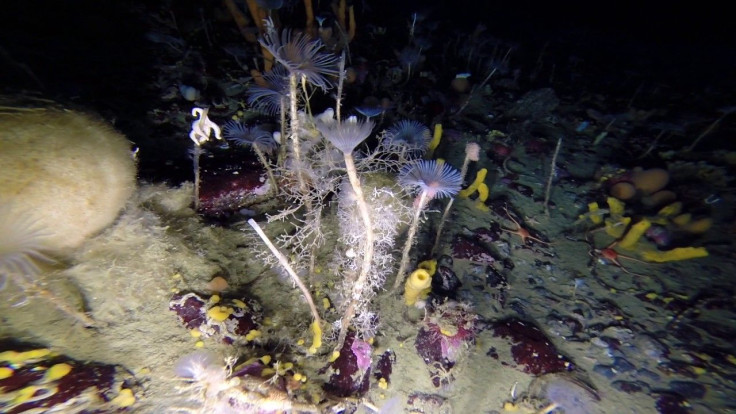Video Shows Rare Glimpse of Colorful, Biodiverse, Underwater Habitat in Antarctica

A colorful underwater habitat replete of a wide variety of biodiversity was found in the least expected place--Antarctica.
Footage from an underwater robot captured a rare glimpse of a hidden habitat beneath the sea ice in East Antarctica, the Australian Antarctic Division recently revealed.
The community is filled with coconut-shaped sponges, dandelion-like worms, pink encrusting algae and spidery starfish. Scientists stumbled into the hidden habitat while retrieving a SeapHox pH data logger, which has been recording the acidity, oxygen, salinity and temperature of the seawater on an hourly basis since November last year.
“When you think of the Antarctic coastal marine environment, the iconic species such as penguins, seals and whales usually steal the show,” Dr. Glenn Johnstone, an Australian Antarctic Division biologist, said. “This footage reveals a habitat that is productive, colourful, dynamic and full of a wide variety of biodiversity, including sponges, sea spiders, urchins, sea cucumbers and sea stars.”
The biodiverse community lives 30 meters below the surface, in water that is -1.5°C year round and are covered in 1.5 metre thick sea ice for nearly most of the year, Johnstone says.
“Occasionally an iceberg may move around and wipe out an unlucky community, but mostly the sea ice provides protection from the storms that rage above, making it a relatively stable environment in which biodiversity can flourish.”
Researchers are in the beginning phase of understanding the biodiversity and complexity of the Antarctic near-shore ecosystem, as well as the threats it faces in the future, Johnstone says.
Threat to Marine Organisms
Scientists in the Australian Antarctic Program project are in the final field component of an experiment which will determine the impacts of ocean acidification on Southern Ocean sea-floor communities under increasing carbon dioxide emissions.
A quarter of the carbon dioxide emitted into the atmosphere is absorbed by the ocean, which escalates water's acidity, says Dr Johnny Stark of the Australian Antarctic Division. Since carbon dioxide is more soluble in cold water, and polar waters are acidifying at twice the rate of tropical or temperate places, Stark expects cold and polar water to be among the first to be impacted by ocean acidification. That can be a threat to the marine environment.
“Research shows the pink encrusting algae, known as crustose coralline algae, may decrease in extent in a more acidic future ocean, as it incorporates calcium into its structure, and this becomes harder for organisms to obtain as the acidity of the seawater increases,” said Stark.
“Antarctica may be one of the first places we see detrimental effects of ocean acidification on these organisms.”
Climate change is a major threat to Antarctica. Scientists recently confirmed that Totten, East Antarctica’s largest glacier is melting from below.
The unusual heat in the ocean is flooding into the bottom of the ice sheet at a rate of 220,000 cubic meters per second, the study says. The flooding waters is causing the glacier to lose between 63 and 80 billion tons of its ice to the ocean annually, and to lose about 10 meters (32 feet) of thickness per year.
© Copyright IBTimes 2025. All rights reserved.




















